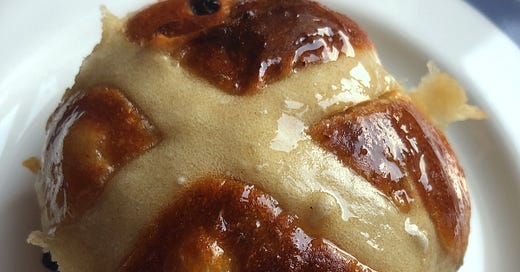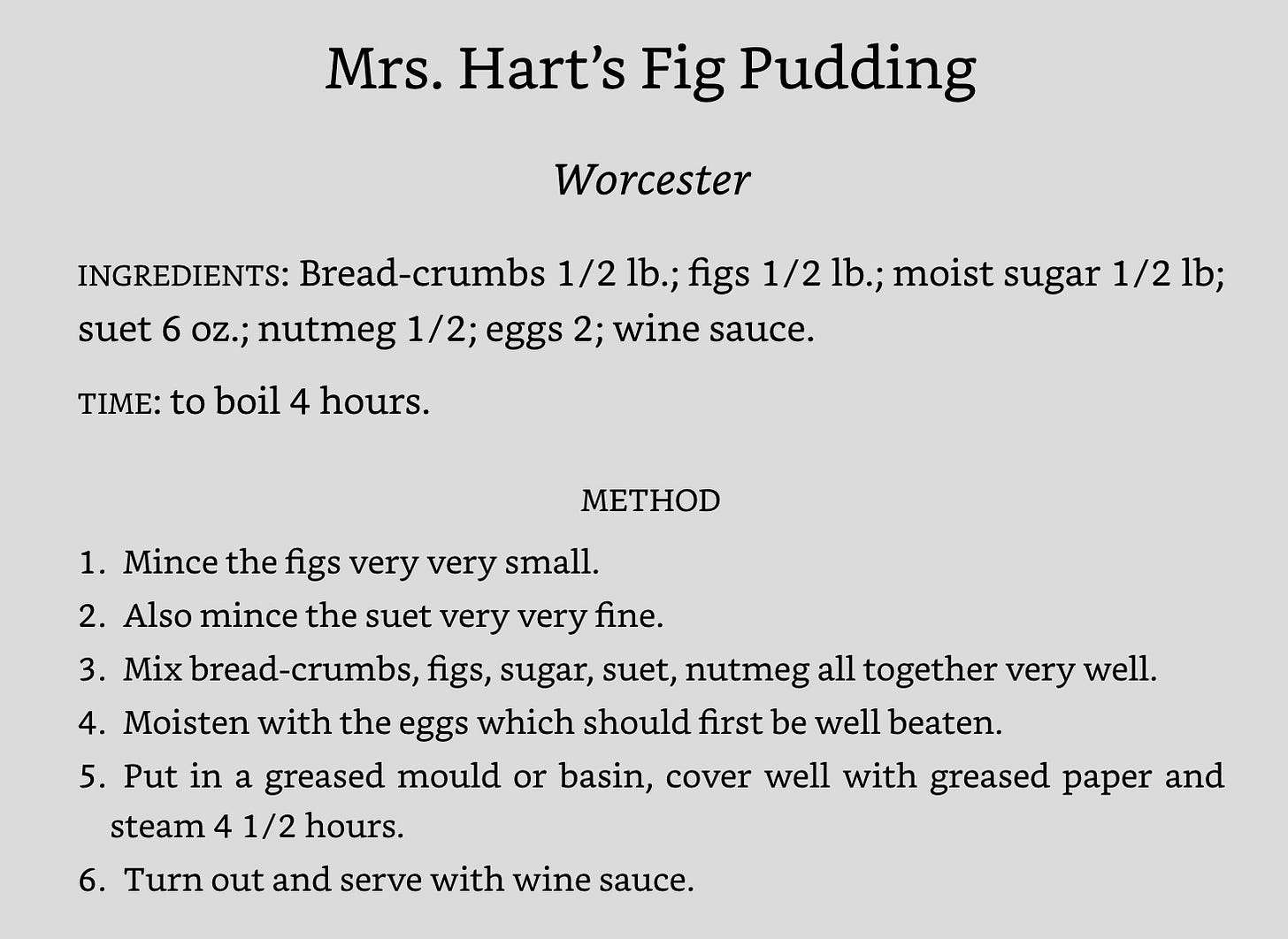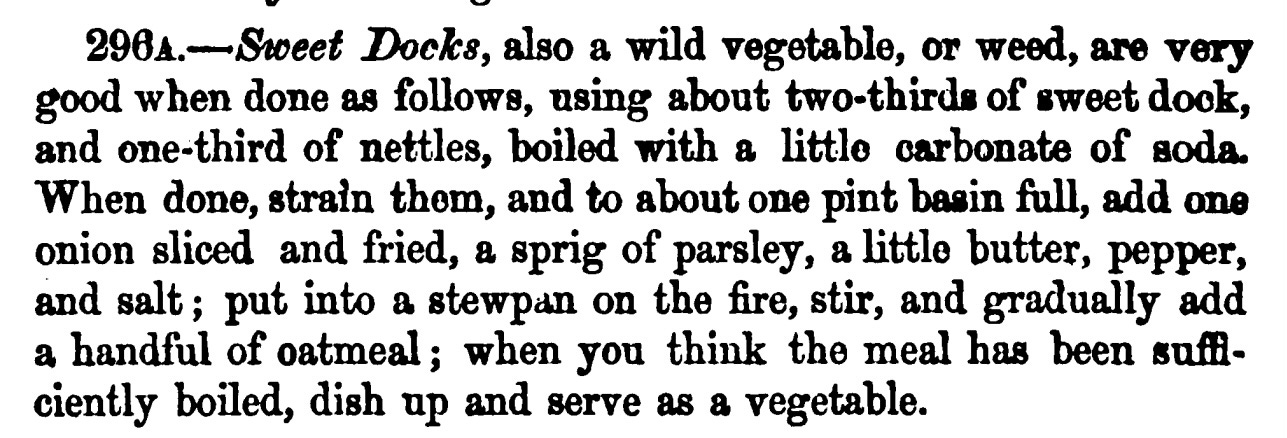From Figgy Sunday to Passion Pudding
via Fig Sue, Hot Cross Buns, Bread, Eggs and Folklore Gardening Tips
Dearest Gentle Reader,
I hope all is well with you and yours. I beg your pardon for the late arrival of the letter, I am on holiday so my time has been full of reading and relaxing when my thoughts should have been with you. As a result of my lateness I have decided to deliver to you an outpouring of food, herb and gardening lore surrounding Good Friday: the first day of Easter as well as a little from Palm Sunday.
Firstly I have to share with you something I only found out this week: in some parts of England, Palm Sunday (the last Sunday in Lent) was once celebrated as Figgy Sunday! Figgy pies and puddings were made to be eaten as well as giving dried figs to children as a treat. The general consensus seems to be an association with figs and palms and the bible generally and as it was very tricky to get palm leaves in wet and cold England, dried figs were generally available so were substituted instead.
If anyone has a source with a better suggestion I am very happy to entertain it but in the meantime will just enjoy the celebrations of figs. I even have a recipe for Mrs Hart’s Fig Pudding from Florence White’s Good Things in England book just in case I have stimulated any of you to prepare it.
This joyous fig talk leads me on quite nicely to the first of our interesting Good Friday foods - Fig Sue, which was apparently eaten in Lancashire on Good Friday although the tradition may have been slightly more widespread. This was a mixture consisting of ale, sliced figs, bread, and nutmeg for seasoning, boiled together, and eaten hot like soup. John Briggs in 1825 even noted that it was good for coughs and colds as well but only if taken at bedtime.
Figs aren’t the only food that most people don’t now associate with Good Friday. The Passion Dock Pudding or Dock Pudding is a tradition which still exists today but only apparently in the Calderdale valley of Yorkshire. There does seem to another version from Cumbria but they are different puddings. The Cumbrian pudding is made with passion dock leaves (in this instance almost certainly bistorta officianalis rather than the dock leaves found near nettles) barley, hardboiled egg which are mixed and boiled and served with a raw egg and butter. The heat from the pudding melts the butter and cooks the beaten egg. There are other similar recipes for herb puddings in this vein.
The Yorkshire Passion Dock Pudding is a version of a hasty pudding with the leaves plus nettle leaves boiled with oatmeal and served alongside or fried up in bacon. These were both eaten on Good Friday allegedly because of the bitterness of the leaves was suited to the sadness of the day and the name (Passion Dock) reflects the Passion of Christ or the period of suffering before his death. If you wish to try this you can head over to Calderdale as there has been an annual Passion Dock Pudding Competition there since 1971 and is being held again on 22 April 2023.

You can also try this recipe from Alexis Soyer’s book A Shilling Cookery for the People should you be so inclined:
Hot Cross Buns are another Good Friday favourite and Elizabeth I actually banned the sale of spiced buns and spiced breads except for Good Friday, Christmas Day and burials due to the popularity of these breads and the connection to the Catholic Church. See, it wasn’t just Oliver Cromwell who was judgey about highly seasonal food products. If you want to know more folklore and history about these wonderful buns you should head over to Icy Sedgwick’s brilliant blog and podcast Fabulous Folklore, where she has an episode devoted to them: https://www.icysedgwick.com/hot-cross-buns/.
I will just mention that it was considered unlucky not to eat Hot Cross Buns on Good Friday and I even made my own during lockdown 2020 as I didn’t want to risk the possibility of additional misfortune. I have to be honest, they were delicious but they don’t last long and you have a lot of them if you make your own. We ended up desperate for alternatives to toasting them so I have stuck to buying them from Marks and Spencer since then.
Please see my most perfect specimen below though because they were pretty. One last thing in this section: it was said that eggs that were laid on Good Friday would stay fresh forever although I personally wouldn’t rely on it, perhaps because I don’t have my own chickens.
Additionally small loaves could be baked on Good Friday and allowed to dry out. These were used grated throughout the year and added to water to make a cure for a variety of illnesses and whilst they were in the house they kept the house safe from fire. I would invest in a smoke alarm as well, just in case.
Right, that’s the end of the food folklore, lets move to the weather and herb lore which in this instance I must admit is really more about gardening. I’ll start with the weather lore in this little ditty:
“Rain on Good Friday and Easter Day,
A good crop of hops, but a bad one of hay.”
I have no idea what the forecast is but maybe we could wish for a mixture and get reasonable crops of hay and hops; both of which sound pretty essential even to my urban ears.
The rest of this is really gardening advice, Good Friday is the apparently the day to sow parsley, dibble potatoes and plant myrtle should you wish for a successful planting. This seems to be because the devil can’t interfere with the planting on this day and he was particularly good at preventing healthy plants of these species. It was apparently even safe to move parsley on this day which usually was so frowned upon because it predicated a death in the family. Some people even went as far as to say that planting parsley on Good Friday ensured luck and happiness throughout the following year.
Potato dibbling was encouraged because it meant that luck entered the crop and it would be kept safe from pestilence and bad weather. It might also be a good time of year for it generally but I know nothing of these mysteries. It is possible this dates back to a time when potatoes were considered evil until they were blessed and this day was a very holy one.
If you are particular desirous of growing myrtle, and why wouldn’t you be, I have some additional folklore based advice. You should ‘spread out the tail of one’s gown and look proud’ whilst planting it or it won’t flourish. I must admit that this advice hasn’t kept up with current fashions but maybe you have a frock that could work with it. If you can achieve it, it’s apparently a very lucky plant to have around.
I think that’s all I have in me today and we have many vintage recipes above and even a remedy already, if you are prepared to count the grating up of old, dry Good Friday bread and adding it to water (which I don’t condone) and/or Fig Sue for which I hope you will forgive me this once. If you celebrate Easter, or just happen to live in a country where they let you have a long weekend off to eat chocolate eggs, I wish you joy.
So with that, Gentle Reader, I must bring this letter to a close. Please don’t hesitate to get in touch via the comments or via any of my social media profiles/my website . If you have enjoyed this and would like to read further such nonsense and have not yet subscribed, please don’t hesitate to subscribe for free at the button below. You’d be very welcome and it would be a joy to write to you.







